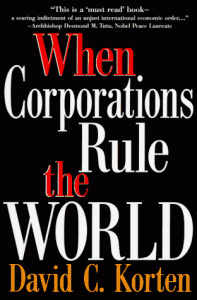The 7 Habits of Effective Sustainability Leaders
Article by Wayne Visser
Without bold and effective leadership – at a political, institutional and individual level – we will fail to resolve our most serious social and environmental crises. This short article summarises some of the findings from my work with the University of Cambridge Programme for Sustainability Leadership[1]. To begin with, we distilled the following simple definition:
“A sustainability leader is someone who inspires and supports action towards a better world.”
There are many characteristics (traits, styles, skills and knowledge) that are associated with sustainability leaders.[2] Our research suggests that the following seven key characteristics are among the most important in distinguishing the leadership approach taken by individuals tackling sustainability issues:
- Systemic understanding
- Emotional intelligence
- Values orientation
- Compelling vision
- Inclusive style
- Innovative approach
- Long term perspective
Although it is unlikely that any individual will embody all seven characteristics of sustainability leadership, to give a flavour for each characteristic, they are illustrated below by observations from a selection of leaders, many of whom we have worked with and who demonstrate some of these qualities themselves …
[1] See for example, the Cambridge State of Sustainability Leadership publication series since 2011.
[2] See my paper with Polly Courtice for a more comprehensive review of these characteristics
Continue reading
[button size=”small” color=”blue” style=”download” new_window=”false” link=”http://www.waynevisser.com/wp-content/uploads/2013/06/inspiration_sustainability_leadership_wvisser.pdf”]Pdf[/button] The 7 Habits of Effective Sustainability Leaders (article)
Related pages
[button size=”small” color=”blue” style=”info” new_window=”false” link=”http://www.waynevisser.com/books/the-quest-for-sustainable-business”]Page[/button] The Quest for Sustainable Business (book)
[button size=”small” color=”blue” style=”tick” new_window=”false” link=”http://www.csrinternational.org”]Link[/button] CSR International (website)
Cite this article
Visser, W. (2013) The 7 Habits of Sustainability Leaders, CSR International Inspiration Series, No. 12.






